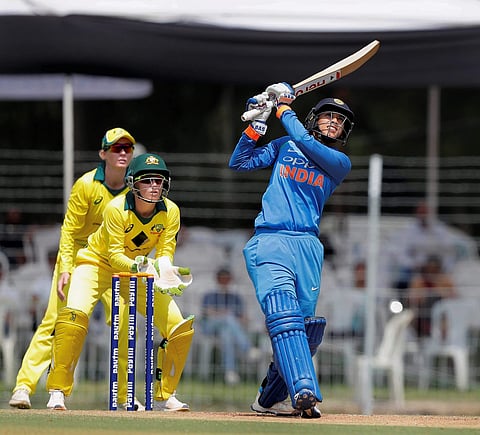

VADODARA: On the eve of the second ODI against Australia, Mithali Raj was asked if Australian spinners held an upper hand in the first match, where they shared seven wickets.
The India women’s skipper replied that she wouldn’t call them a success, as it was the batters who threw away their wickets.
But after the second match on Thursday, which India fell short by 60 runs chasing 288 to lose the series with a match to go, batting failure is in focus again. And so is the inability to handle spin. In two matches, Australian spinners have accounted for 13 of the 20 wickets, against players who are supposed to be strong against the variety in Indian conditions.
Though the top-order faced questions after the first ODI which Mithali missed, Thursday’s game showed the middle-order also needs attention. Left-handed opener Smriti Mandhana showed determination in her 53-ball 67, hitting 52 runs on the leg side. Apart from her, nobody was able to put pressure on the bowlers once she lost her wicket to Jess Jonassen, trying to hit towards square-leg off the back foot.
While the team is chasing a target above 250, the aspect of strike-rate comes into the scenario. Surprisingly, apart from Mandhana and Mithali, none in India’s top six has strike rates above 80.
The worst being opener Punam Raut at 57.19. Veda Krishnamurthy has 78.38, but she has never converted a 50 into a century. Punam scored 27 off 61 deliveries on Thursday. When a player like her stays at the crease for 15-20 overs and does not get a big score, it puts pressure on the middle-order.
Another surprising aspect is the number of times the team has touched 250, an average score in the 50-over format these days. Since January 2017, India have scored in excess of 250 only four times in 11 matches (including Thursday’s). In this period, they have played in Sri Lanka, England, South Africa and India.
“It is a concern. Like I said, while chasing a big total, you have to keep the run rate going irrespective of losing wickets,” said Mithali.
“But at the same time, you need to also know when you need to develop partnerships. They did develop, but the strike rate was not quite positive,” Mithali said after the match.
On the other hand, the Australians were scoring at a brisk pace in both matches. In the last 10 overs alone, Meg Lanning & Co hammered 84 runs in the second match. This was one of the differences between a team that won by a good margin and the other that lost convincingly.
“We can’t say that the middle-order got out trying to hit unnecessarily. The intent was there. You can’t chase 280-plus with just singles. We had to go for boundaries. The Aussies had a boundary every over.
“That’s why they could continue in that vein even after losing wickets. We need to keep that approach. Now that cricket is evolving, we need to catch up. We can’t play old school, or chase 280 in the end overs as that doesn’t happen in every match.”
With the last match coming up on Sunday, it remains to be seen if the hosts can pull off a win and rectify their mistakes.
srinidhi@newindianexpress.com